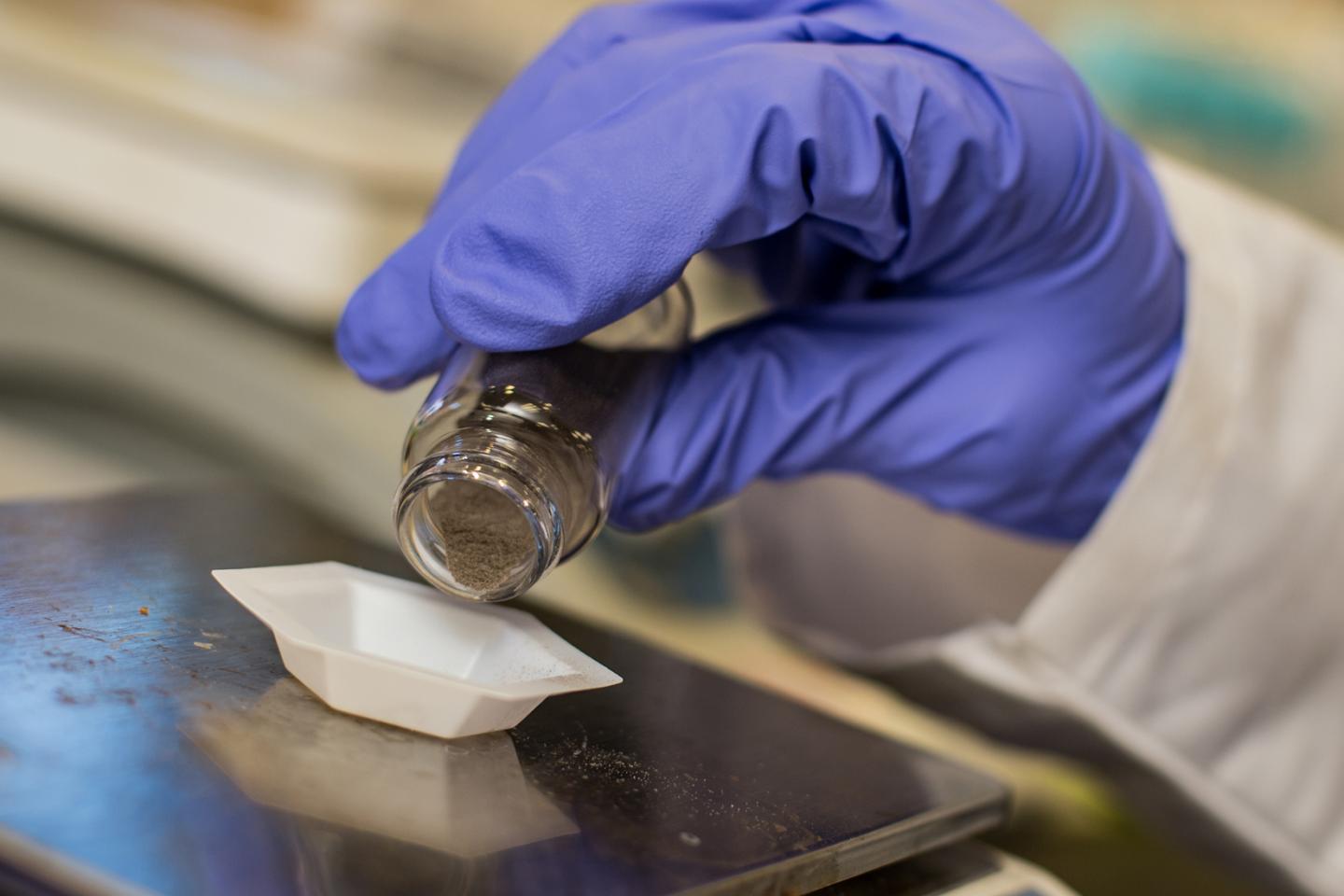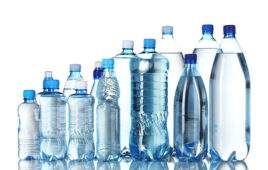
Rice University’s indium-palladium nanoparticle catalysts clean nitrates from drinking water by converting the toxic molecules into air and water. Credit Jeff Fitlow/Rice University
A simple, one-step catalyst could help yield cleaner drinking water with less nitrates.
A team from Rice University’s Nanotechnology Enabled Water Treatment (NEWT) Center have discovered that a catalyst made from indium and palladium can clean toxic nitrates from drinking water by converting them into air and water.
“Indium likes to be oxidized,” co-author Kim Heck, a research scientist at Rice, said in a statement. “From our in situ studies, we found that exposing the catalysts to solutions containing nitrate caused the indium to become oxidized.
“But when we added hydrogen-saturated water, the palladium prompted some of that oxygen to bond with the hydrogen and form water, and that resulted in the indium remaining in a reduced state where it’s free to break apart more nitrates,” she added.
In previous research, the researchers discovered that gold-palladium nanoparticles were not good catalysts for breaking apart nitrates. This led to the discovery of indium and palladium as a suitable catalyst.
“Nitrates are molecules that have one nitrogen atom and three oxygen atoms,” Rice chemical engineer Michael Wong, the lead scientist on the study, said in a statement. “Nitrates turn into nitrites if they lose an oxygen, but nitrites are even more toxic than nitrates, so you don’t want to stop with nitrites. Moreover, nitrates are the more prevalent problem.
“Ultimately, the best way to remove nitrates is a catalytic process that breaks them completely apart into nitrogen and oxygen or in our case, nitrogen and water because we add a little hydrogen,” he added. “More than 75 percent of Earth’s atmosphere is gaseous nitrogen, so we’re really turning nitrates into air and water.”
Nitrates, which could also be a carcinogenic, are considered toxic to both infants and pregnant women.
Nitrate pollution is common in agricultural communities, especially in the U.S. Corn Belt and California’s Central Valley, where fertilizers are heavily used. Studies have shown that nitrate pollution is on the rise because of changing land-use patterns.
The Environmental Protection Agency regulates allowable limits both nitrates and nitrites for safe drinking water. In communities with polluted wells and lakes, that typically means pretreating drinking water with ion-exchange resins that trap and remove nitrates and nitrites without destroying them.
“Nitrates come mainly from agricultural runoff, which affects farming communities all over the world,” Wong said. “Nitrates are both an environmental problem and health problem because they’re toxic.
“There are ion-exchange filters that can remove them from water, but these need to be flushed every few months to reuse them, and when that happens, the flushed water just returns a concentrated dose of nitrates right back into the water supply.”
The researchers will now try to develop a commercially viable water-treatment system.
“That’s where NEWT comes in,” Wong said. “NEWT is all about taking basic science discoveries and getting them deployed in real-world conditions.
“This is going to be an example within NEWT where we have the chemistry figured out, and the next step is to create a flow system to show proof of concept that the technology can be used in the field,” he added.
The study was published in ACS Catalysis.



